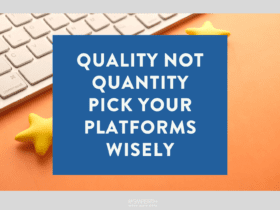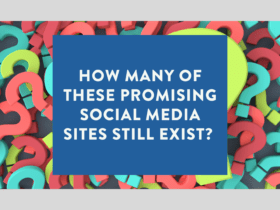In many marketing departments, the first response to the current pandemic appears to have been to send an email.
You may even be tempted to emulate some of the COVID-19 messaging you see other brands and businesses using.
These are unprecedented and uncertain times – or so we keep hearing from anyone who doesn’t know how to use a thesaurus. Therefore, surely you need to do something in recognition of how crazy the world is right now. And an email blast certainly feels like doing something.
Your intention to send an email may be perfectly benign. But it’s important you test your comms plan to avoid becoming yet another spreader of this irritating marketing disease.
No need for a nasal swab. Conduct the test by asking the following questions:
Have your services changed in response to COVID-19 that customers will need to know?
An insurance company sending a long COVID-19 email that says little more than “we’re still selling insurance and processing claims as usual” is guaranteed to waste the reader’s time. An insurance company that couldn’t operate as normal in a crisis would be pretty useless!
Don’t use COVID-19 as an excuse for an email blast that basically says nothing, just because the urgent-sounding subject line might get your open rates up.
And 200 words that ultimately boil down to “We’re here for you” is basically saying nothing.
On the other hand, if you have made significant changes or added new features related to the current situation, then an email may be more than appropriate – even useful.
It’s how I learned Xero had created a handy “turnover calculator” and other tools for businesses to check their eligibility for the government’s JobKeeper payment.
Will the customer be affected in any way by the measures you’ve taken?
Three long paragraphs on how you’ve changed the warehouse roster to look after your staff has no impact on me, so why are you telling me? Social distancing is a legal requirement, so I assumed you had to anyway. Crowing about it is seeking credit for doing the minimum.
Oh, and if your justification is to say that delivery or call centre times may be slower than usual, WE KNOW. Any reasonably smart person worked that one out long before fifty different brands decided to fill our inboxes with the bleeding obvious.
Plus, active customers should get a “delivery delays” message when buying an item, making an email blast completely irrelevant to everyone else. Which brings us to …
Is the email list targeted?
It’s tempting to view every single contact in the database as a potential customer, but they’re probably not. I really don’t need to know how the lawnmower repair shop I bought a replacement part from ten years ago is adapting to COVID-19.
Segment your list. Ideally, tailor your messages too. Current customers may need an update on backorder issues, business customers may need to be informed on any new purchasing limits, while lapsed customers may not need to hear from you at all.
Is the message brief and to the point?
Say what you need to communicate and stop. Don’t make your audience read three paragraphs of “kumbaya” before announcing the one piece of information they really need to know. Chances are, they’ll have stopped reading by then.
Is the payoff really a bait and switch?
I can’t tell you how many emails I’ve opened that, on the surface, appeared to be relevant or useful only to discover it’s a thinly disguised product plug.
Yes, we’re all working from home now. Yes, that requires internet and mobile connectivity. No, I don’t need a telco to remind me that they sell mobile internet services and products.
Don’t shoe-horn your BAU product into a very non-BAU pandemic. Just don’t. Try harder.
There is one good thing to come from this marketing pandemic – and it’s one many marketers might want to take into account before hitting send on that COVID Update. When one of these emails lands in someone’s inbox, the recipient can very easily immunise themselves against further irritations from the same source.
Unsubscribe.
After a decade or more of gated white papers you ultimately never read or webinars you forgot to attend, each fevered email in your inbox makes it clicking easy to identify and remove your details from yet another marketing list you’ve inexplicably found yourself on.
Anyway, enough ranting. Time for me to finish with a weak, cliched platitude.
We can get through this. Together. 😉









LET’S CONNECT